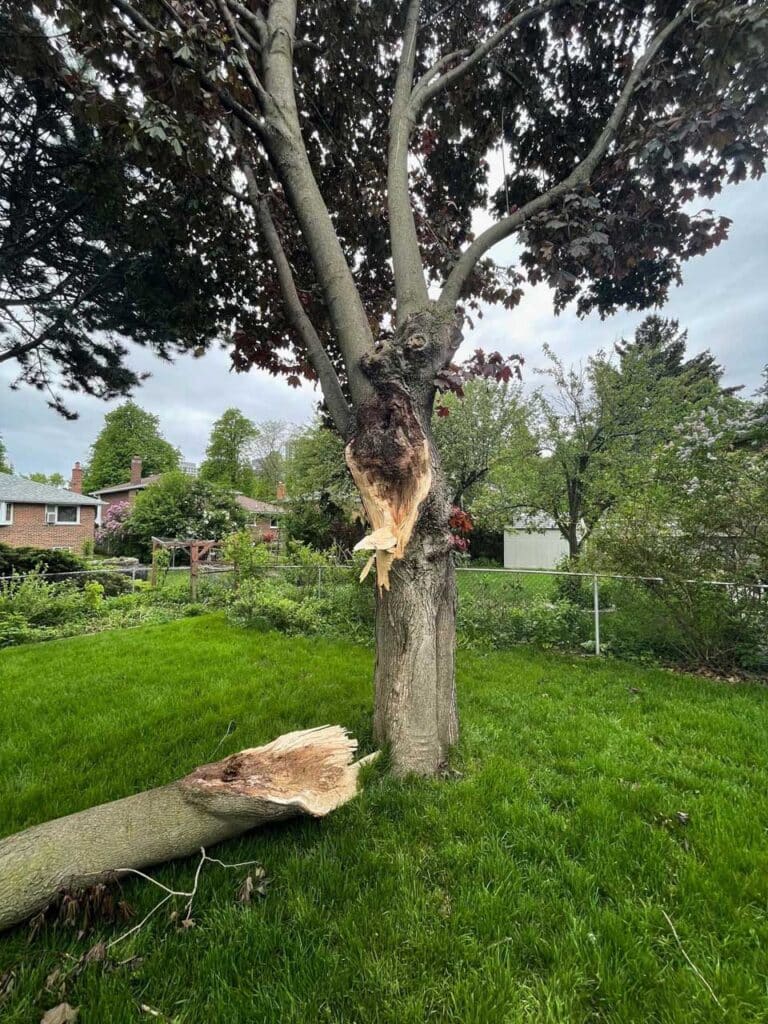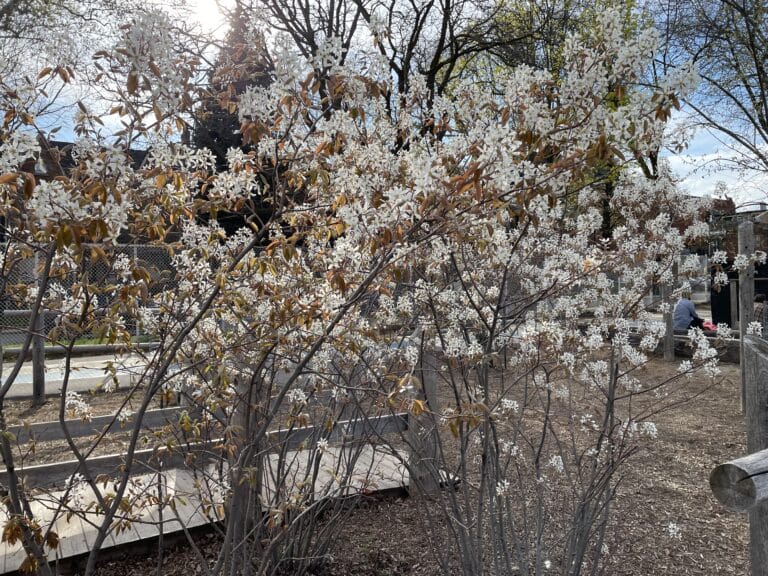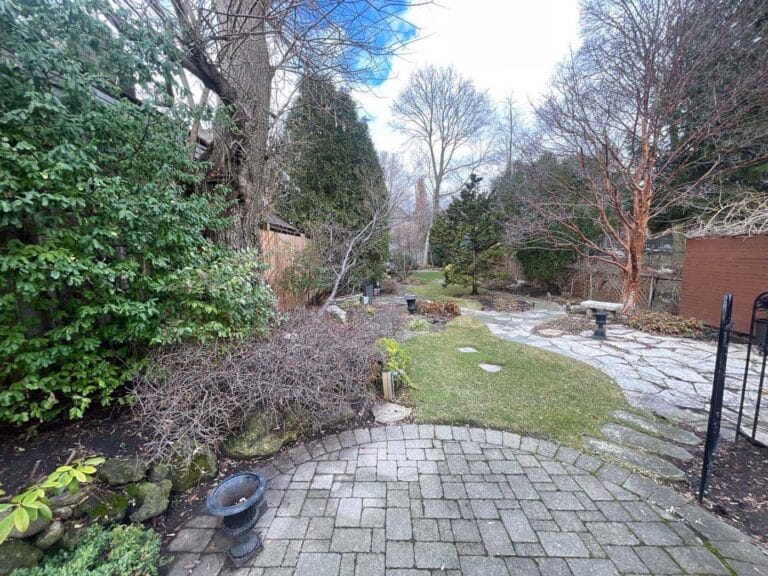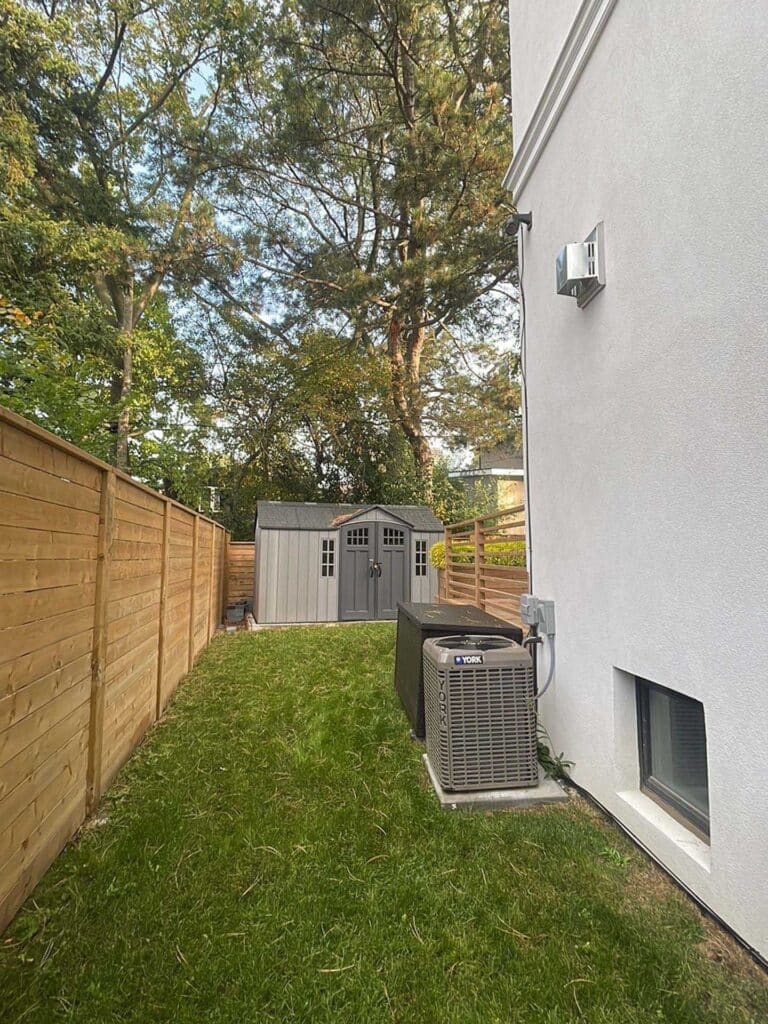It’s expected that branches may fall during a summer thunderstorm or wind storm, but what happens if a branch breaks during calm summer conditions? This is known as summer limb failure, and it can happen in warm and hot weather.
What is this phenomenon, and what does it mean for your tree?
What Is Summer Limb Failure?
Sometimes, a tree withstands strong conditions during winter, spring and summer storms. Then, all of a sudden, a long branch breaks on a warm, still summer’s day. Summer limb failure is also known as summer limb drop or sudden limb drop.
Typically, this happens when a large horizontal branch breaks for no obvious reason. Sometimes, it happens on upright branches. Breaks are frequently clean breaks, as though the branch was already brittle.
When Sudden Limb Drop Happens
Sudden limb drop happens during hot, or sometimes warm weather. Both deciduous and coniferous trees can be affected. This sort of breakage is found in some types of oak, pines, beeches, elms, poplars, cedars and silver maple, among other species.
This can happen day or night in summer weather, both in dry and moist soil conditions.
Why Summer Limb Drop Occurs
Unfortunately, arborists aren’t entirely in agreement what causes this phenomenon. Some hypothesize that it’s caused by dry wood. High temperatures can also dry wood fibers, causing them to lose elasticity and make breakage more likely. Others suggest that the combination of high temperatures and increased wood weight can lead to the breakage. Some trees such as the Siberian Elm are known to be relatively weak with heavy wood, making them prone to failure.
What to Do If a Branch Fails
If you need assistance clearing a hazardous branch, call an arborist right away for an urgent job. If the branch has fallen in a safe location, you’re not likely to be at risk from immediate further branch failures. If feasible and safe, you can clear the branch away yourself, or contact an arborist for assistance with cutting and removing a large broken limb.
After a summer limb failure, it’s best to have your tree evaluated by an arborist. They can assess whether there’s a larger issue with your tree, such as an infestation or a large amount of dead wood inside. They’ll evaluate the whole tree’s health, and see if there are any other branches at risk of failure.
You can then plan any next steps, like pruning or clearance of any broken branches.
How to Protect Against Summer Limb Failure
The best way to protect your tree against summer limb failure is to keep it in good health and conduct regular preventative maintenance. Regular pruning helps keep your tree healthy. An arborist can help reduce crown and branch size if any branches become too unwieldy. They can remove any branches that are already broken, cracked, or have deadwood.
Branches with old wounds from previous pruning, storm damage, infections or animal damage can also be removed.
Keeping your tree hydrated in dry summer weather also keeps it healthy and protected against damage. During hot dry weather, deep watering 1-2 times a week will make sure your tree gets enough water. Frequent, short waterings are not as helpful to trees and can promote rot in some circumstances.
Need assistance clearing or checking a tree after a summer storm, or summer calm? Check out Vista Tree’s pruning and storm and hazard clearance services.








